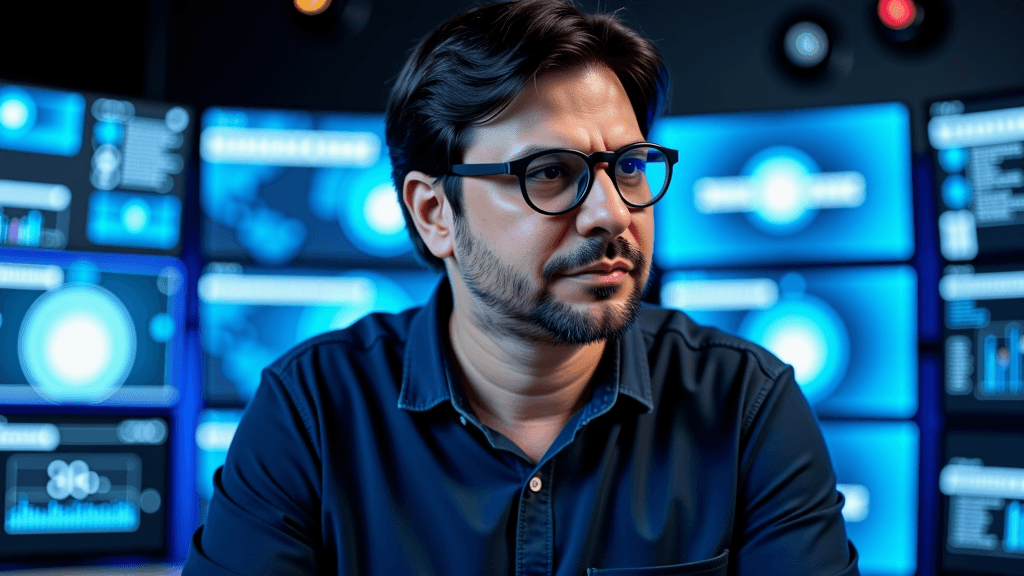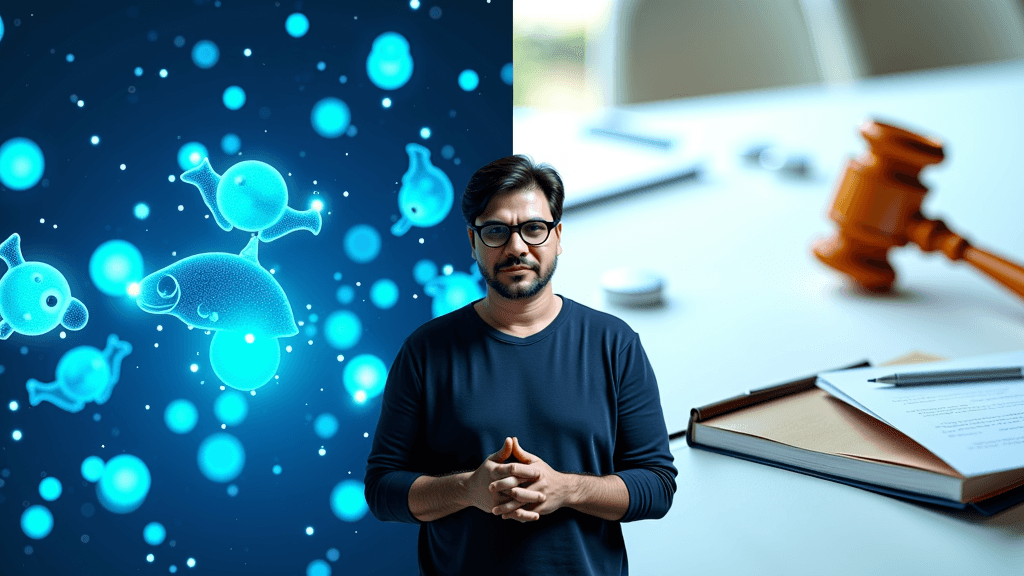MIT Study Reveals AI Paradox: Why Too Much Ease May Be Harming Our Ability to Think
June 29, 2025 | by Matos AI

Imagine a world where answers arrive before questions are even fully formulated. Where college students, instead of debating complex concepts, simply copy and paste ready-made solutions. This world is not science fiction — it is the reality of June 2025, and a pioneering MIT study has just sounded the alarm about something many of us suspected: AI may be making us cognitively lazier.
The Hidden Price of Artificial Convenience
MIT researchers did something fascinating — and a little scary. They scanned the brains of ChatGPT users and found that over-reliance on AI not only reduces mental engagement, but appears to weaken the brain's own ability to stay active. It's as if we're outsourcing our most important mental muscle.
As someone who has spent decades observing how technology transforms behaviors—first in the startups I’ve accelerated, then in education—I can tell you that this finding doesn’t surprise me, but it definitely worries me. We’re experiencing what scientists call “cognitive offloading,” a phenomenon where we hand over mental processes to machines so much that our brains literally “unlearn” how to work on their own.
Join my WhatsApp groups! Daily updates with the most relevant news in the AI world and a vibrant community!
- AI for Business: focused on business and strategy.
- AI Builders: with a more technical and hands-on approach.
Second observations of university professors, tools like ChatGPT, Gemini, and DeepSeek are “captivating students with their speed and seemingly flawless responses,” but exacting a heavy price: the erosion of critical thinking, creativity, and the ability to produce original insights.
The Brazilian Paradox: Innovation and Dependence
While universities around the world face this cognitive crisis, Brazil presents a fascinating panorama of contrasts. On the one hand, we have initiatives such as SoberanIA, developed by the government of Piauí, a 100% platform in Portuguese that aims to reduce our dependence on foreign solutions. On the other hand, we apply AI intelligently in detection of structural faults in more than 5 thousand bridges who are over 50 years old.
These cases show something fundamental: the difference between using AI as a crutch and using it as a tool to augment human intelligence. When we detect invisible microcracks in bridges, we are enhancing our capacity for observation. When we copy ready-made answers for academic essays, we are atrophying our capacity for reasoning.
The Geopolitics of Artificial Intelligence
But there is an even bigger context that we cannot ignore. The Folha de S.Paulo revealed that AI is creating a new global digital divide, with the US and China controlling over 90% of the computing power used for AI. This means that while we discuss the effects of cognitive dependency, entire countries are becoming dependent on foreign AI infrastructure.
This is where initiatives like SoberanIA gain strategic importance. It is not just about having AI “made in Brazil”, but about ensuring that our young people have access to tools that respect our culture, our way of thinking and our specific challenges.
The Classroom as a Cognitive Battlefield
In my experience working with innovative education and talent development, I have always observed that true learning happens in the discomfort zoneIt is when we face complex problems, when our minds have to make non-obvious connections, when we are forced to think in original ways that we develop lasting cognitive muscles.
The problem with current AI tools isn’t their existence — it’s how we’re allowing them to use us. Harvard, MIT, and Cambridge are documenting how students who rely too heavily on AI are experiencing impairment in intellectual development, especially concerning in young people in training.
This reminds me of the early days of calculators in schools. Some said they would end math education. They didn’t, but they fundamentally changed how we teach and learn math. The difference is that calculators do math — generative AI does thinking. Or at least pretends to do it.
What We Lose When We Stop Thinking
When we outsource our ability to craft arguments, to make creative connections, to question assumptions, we don’t just lose academic skills. We lose our intellectual autonomy. And in a world where creativity, critical thinking and adaptability are the only truly human competitive advantages, this is especially dangerous.
In my work with startups, I’ve often observed that the most successful entrepreneurs aren’t the ones with access to the best tools, but the ones who are best able to ask the questions that no one else is asking. They’re the ones who can see patterns where others see chaos, who can connect seemingly disconnected dots.
The Path to Balance: AI as an Amplifier, Not a Substitute
The answer is not to ban AI from universities or demonize these tools. That would be like trying to stop a flood with your bare hands. The answer lies in rethink our relationship with technology and, most importantly, rethink how we educate and work in the age of AI.
Some strategies I have observed working:
- AI as a discussion partner: Using tools to generate arguments that are contrary to our own, forcing us to refine our thinking
- Full transparency: Always declare when and how AI was used, making its use part of the learning process
- Focus on the process, not the product: Value the journey of thought, not just the final answer
- Complex and contextual problems: Create challenges that require local knowledge, lived experience and human intuition
The Future of Cognitive Work
What’s happening in universities today is a harbinger of what we’ll see in the job market tomorrow. Professionals who know how to use AI as an amplifier of their intelligence will have an advantage over those who use it as a substitute. The difference is subtle, but fundamental.
A designer who uses AI to generate 100 variations of a concept and then applies their aesthetic judgment and brand knowledge to refine the best option is amplifying their capabilities. A designer who simply accepts the AI’s first suggestion is outsourcing their expertise.
Lessons from the Brazilian Laboratory
Brazil is becoming an interesting laboratory for this discussion. We have universities facing the same cognitive challenges as the rest of the world, but we are also developing local solutions like SoberanIA and applying AI strategically in critical infrastructure.
The bridge initiative is particularly telling. Here, AI isn’t replacing engineers—it’s enabling them to see what was previously invisible. It’s amplifying the human capacity for observation and analysis, not replacing it.
This shows us a way forward: we can reap the benefits of AI without sacrificing our cognitive autonomy, as long as we keep humans at the center of important decisions and use technology to enhance, not replace, our ability to think.
The Moment of Choice
We are at a pivotal moment. The next decisions we make about how to integrate AI into our education, our work, and our lives will determine whether we become a smarter or a more dependent generation.
The MIT study is not just an academic wake-up call—it’s a call to action. We need educators who understand both pedagogy and AI. We need companies that see technology as a tool for empowerment, not replacement. We need public policies that promote technological autonomy without sacrificing cognitive autonomy.
As someone who has spent the last 25 years observing how technology transforms behaviors and creates opportunities, I believe we still have time to choose the right path. But that window won’t stay open forever.
The true artificial intelligence of the future will be the harmonious combination of computational capacity and human wisdom. And this harmony will only be possible if we keep our cognitive muscles in shape.
In my mentoring work with entrepreneurs and leaders, I always emphasize that the best decisions come from the combination of data and intuition, between analysis and creativity. AI can provide us with the data and the analysis. But the intuition and creativity? Those remain ours alone—at least as long as we choose to keep them active.
✨Did you like it? You can sign up to receive 10K Digital's newsletters in your email, curated by me, with the best content about AI and business.
➡️ Join the 10K Community here
RELATED POSTS
View all



